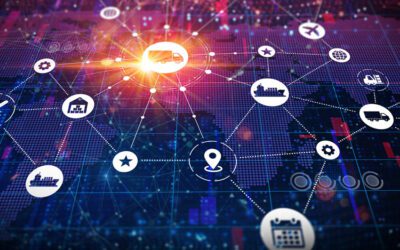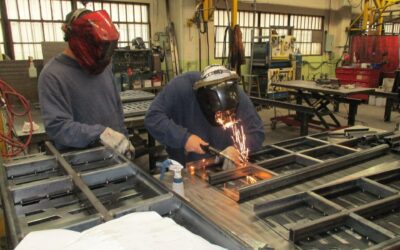Every industrial sector is about to be transformed by a massive wave of digital transformation, and manufacturing is no exception
Over the last thirty years, successive waves of digital innovation have brought significant change to every industry. First came the PC productivity revolution, then the rise of the web, and more recently the shift to mobile devices and cloud computing. Some sectors have been quicker to embrace new technology than others. Lagging industries left the door open for technology-oriented companies to reinvent their business and cause them major pain. Think retail and the emergence of the now mighty Amazon.
In the next decade, several major new technology waves will combine to create a technology tsunami that will come crashing into every business in the world. Including yours.
These disruptive technologies—Artificial intelligence, Blockchain technology, 5G networking, augmented reality, autonomous machines, and the Internet of Things—will change the way people design, make, sell and distribute products.
Get ready for a monumental period of change
As the former futurist and Chief Evangelist at Intel Corporation, and now an independent futurist that advises companies all over the world on how to navigate the next period of digital transformation, I spend a lot of time thinking about the future of manufacturing.
Artificial intelligence (AI) is not just a new flavor of computing
You should think about AI as a totally new type of computing, able to solve an entirely new set of problems that were previously either impossible or very expensive for traditional digital computers to solve. AI allows computers to hear, see and ‘understand’ the world for the first time. It’s making robots smarter and more capable. It’s making sensors more perceptive. And it’s becoming a co-creator when it comes to designing products and improving factory operations.
A new class of design tools uses AI to help designers find better ways to achieve their design goals, and to create products that are cheaper, stronger, or easier to manufacture. So-called generative design allows a designer to specify certain design constraints and then let artificial intelligence come up with a wide range of suggested options for how to create an object. For example, a furniture designer might specify that they need a chair that has a certain set of dimensions, can support a particular weight, and that meets a cost target. The AI then creates hundreds or even thousands of design options, enabling the designer to choose the one that best meets the need.
Simulation tools can even let the designer know which designs will be most reliable, which will be easiest to make with one manufacturing approach versus another, and so on. The designer might then modify and improve on the design created by the AI, creating a product that is truly co-created by human and machine. Companies like Autodesk are already creating sophisticated tools that enable engineers and designers to co-create with artificial intelligence.
Machinery is getting smarter with AI
Artificial intelligence enables robots to do more than ever, picking up and manipulating irregular objects, spotting defects, working safely alongside humans, and even taking on tasks that traditionally only humans could do, such as polishing.
AI also turbo-charges sensors. Companies like Augury build sensors that use AI to ‘listen’ to the sounds and vibrations made my machinery and automatically learn the difference between normal operational sounds, and sounds that indicate a worn bearing, belt or motor and thus the need for preventative maintenance.
Factories are getting smarter too
The Industry 4.0 concept of cyber-physical systems, where every piece of machinery in a factory and every piece part and product has a digital representation, enables us to rethink the entire production process. By creating a highly-accurate, real-time digital representation of factory operations, sophisticated software can be used to optimize operations and factory throughput. These sentient factories use AI to learn and constantly improve operations and production flow. They can even talk to each other, automatically negotiating with suppliers and agreeing delivery schedules with customers.
For example, if sensors on a CNC machine detect the need for preventative maintenance, the factory management AI can automatically schedule machine downtime, reformat the week’s production plan to work around the downtime, reduce the level of material ordered from suppliers, and inform an upstream factory that they should appropriately increase their order level with their secondary supplier.
Artificial intelligence is just one of the technologies that will transform the way we make things in the next decade.
Augmented reality will enable workers to receive real-time training and instructions via a hands-free, click-free display. New 5G networks will connect equipment and sensors at low latency, improving agility and enabling new set of safety applications.
Distributed manufacturing will enable anyone in the world to have access to the global manufacturing network, making use of spare capacity, negotiating pricing, and even shipping finished goods to customers, all with the touch of a button.
It’s an exciting time in manufacturing
We should expect as much change in the next decade as we have seen since the advent of electrification and mass production.
No matter the size of your business, you should be paying close attention to how technology will reshape your business over the coming years.
If you’re interested to keep up to date on the latest in tech, I write semi-regularly about the business impact of new technology in my blog, which you can find at baldfuturist.com/blog.



